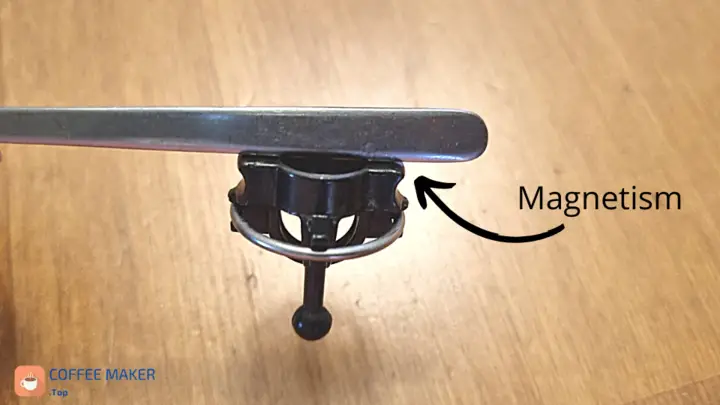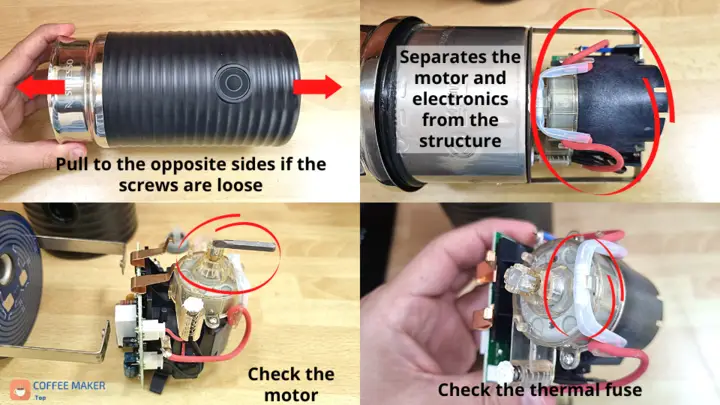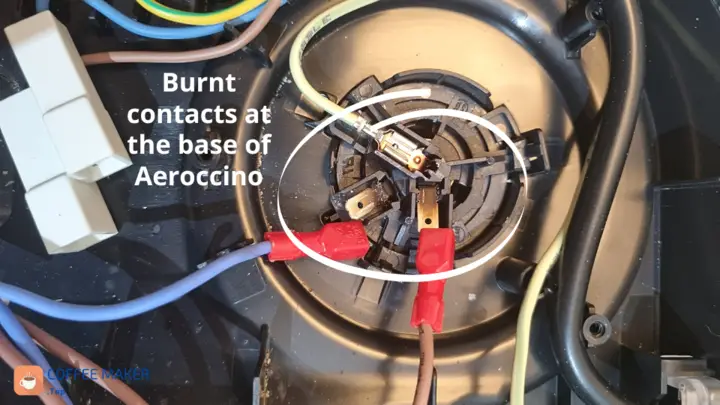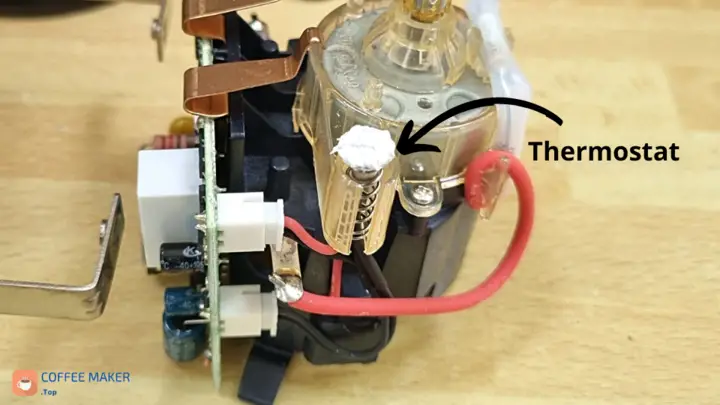The Nespresso Aeroccino is a simple appliance designed for a single function, which is none other than frothing milk. Therefore, the only two faults that can occur are 1- It does not froth milk correctly or 2- It does not froth milk at all.
Each of these problems is due to very different causes. The fact that the milk does not froth properly may be due to the technique, the type of milk used or the configuration of the Aroccino. If the Aeroccino does nothing, it implies an internal electrical fault.
Poor froth quality with an Aeroccino
The Aeroccino, as already mentioned, is a very simple machine; to froth the milk, you just need to press a button. However, you need to consider more than just pressing a button to get a quality froth.
Factors such as the type and quality of the milk, the temperature of the milk and that it is not mixed with other products will be decisive in obtaining a good milk froth.
1. The importance of the temperature of the milk
If the milk is not cold enough, it will heat up too quickly. This will cause the milk proteins to break down before the microbubbles start to form.
If the proteins break down before creating the microbubbles, you will no longer be able to keep them coexisting when they appear, and your froth will look too liquid and untextured.
2. The importance of the milk type you use in your Aeroccino
You can use any milk, be it of vegetable or animal origin. The only thing you should be clear about is that the recommendations for frothing will vary with each type of milk. To clarify, check out our articles on froth soy, oat and almond milk.
3. The importance of using milk free of other substances
For milk to froth, the micro-bubbles that form in it need to cohere as they reach a certain temperature. But there are many substances that, when mixed with the milk, prevent this process from taking place. So, if you add water, sugar, cocoa, or any other substance to the milk before frothing, it will not froth.
Problem with the external whisk not rotating
The external whisk is an essential part of the Aeroccino when frothing milk. If there is damage to this component, it will be impossible to froth the milk. So pay attention.
If your Aeroccino turns on normally and sounds like it is starting to prepare the milk, but you notice that the external whisk does not turn, this part could have a physical fault.
Aeroccino external whisk failure
If the external whisk is experiencing problems, follow these steps to try to solve the problem:
- Turn off the Aeroccino.
- Turn the external whisk by hand to check that it can rotate smoothly. It may be resistant when you do this, but this is normal due to its magnetisation.
- Sometimes dirt causes blockages. So clean the beater very well to remove any residue preventing it from turning normally.
- Physical damage to the whisk, such as cracks or deformation, can also cause clogging. Make sure it is in very good condition.
- The magnetic properties of the whisk must be preserved for it to rotate normally. Check them with the help of metal.

If, after checking the above guidelines, you notice that the external whisk is completely clean, free of obstructions and that there is no physical damage to it, but it is still unable to turn, the internal motor of the Aeroccino should be checked as the problem may be coming from there.
Aeroccino internal motor failure
This fault means having to disassemble the Aeroccino to try to repair it. But it sounds more complicated than it is. Here are the steps you need to follow to carry out this process:

- Remove the two screws from the lower part and when they are loose, pull the upper part. In this way, the Aeroccino will be disassembled.
- Locate the electrical components and separate them from the structure of the Aeroccino.
- The upper part of the motor must retain its magnetic capacity. So check with a metallic element if it can attract it without any problem.
- Turn the motor with your hands to check that it is not blocked.
- If, after checking the above, you find everything in order, check that the thermal fuse has continuity, and if it does not, replace it with a new one.
- But if the fuse is also OK, check the control board. It may be that something on the control board has burnt out, although this is not a common cause. If this happens, replace the complete control board.
Problem with Aeroccino power contacts
When the power contacts of the Aeroccino fail, it will stop working or, at best, work intermittently. This can happen for two reasons; there could be accumulated dirt preventing contact or burnt metal debris left by the current passing through.
The electrical contact can be interrupted at three main points:
- Inside the base of the Aeroccino, where the main cables connect
- At the junction between the base and the Aeroccino
- Inside the Aeroccino

You will have to disassemble the base and the Aeroccino to identify which of these three points has the contact fault.
To solve the problem, clean all the contacts with a kitchen towel and isopropyl alcohol, especially for electronic devices.
Thermostat or internal resistance failure
This fault occurs when the Aeroccino fails to heat the milk even though the motor and the external whisk are working properly. The direct cause of this problem will be related to the thermostat or the electrical resistance.
- If the thermostat is damaged, the Aeroccino will immediately stop working for safety reasons. This part is in direct contact with the base heating element, and you must ensure it always retains the thermal grease that covers it.
- The thermostat must remain in good condition to maintain continuity between it and the black wire with which it is in series. Otherwise, you will have to replace it if there is no continuity between the thermostat and the black wire with which it is in series.
- When the problem is in the resistor, it will be easy to identify as a burnt area is quite visible where the circuit was opened. In this case, it is not advisable to repair the heater because, once the circuit is closed, you will not be able to insulate it sufficiently.

There is another alternative for when the external whisk works, but the milk is not heated, which, although it may take more work, will give the same results. Preheat the milk in a microwave to 65°C and then put it in the Aeroccino to froth it.
Related: Nespresso Troubleshooting.
